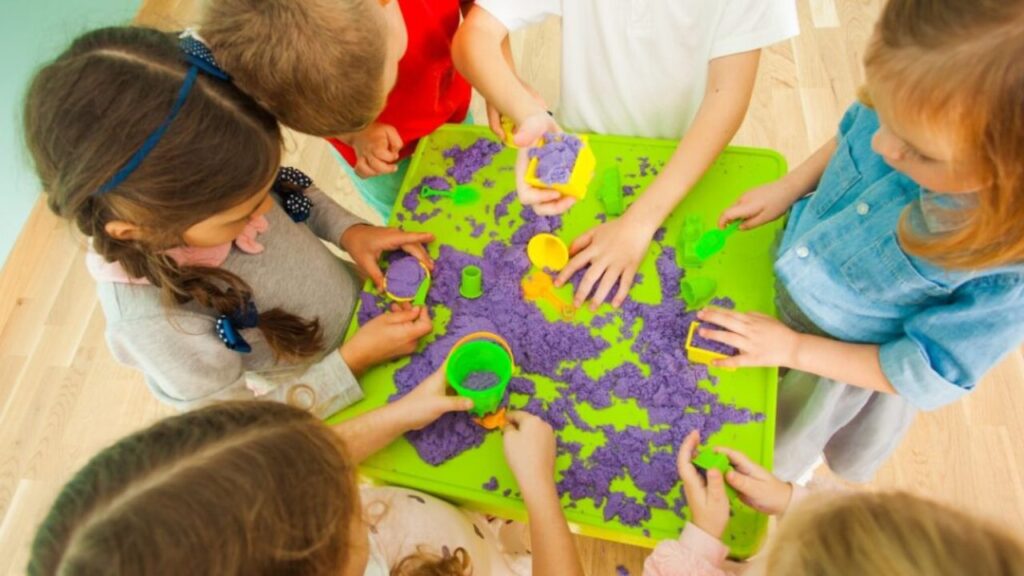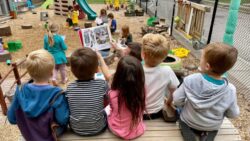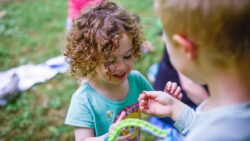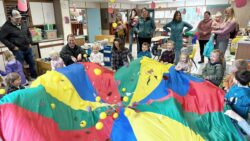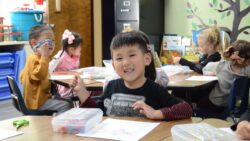In an era where early academics are often prioritized, one preschool is boldly holding onto the most natural and essential way children learn: play. At Eastside Cooperative Preschool, play isn’t just encouraged — it’s the very foundation of learning.
Through imaginative, unstructured, and purposeful play, children at Eastside grow into confident, curious, and creative individuals. Here’s how the power of play is harnessed every single day at this remarkable cooperative preschool.
Why Play-Based Learning Matters
For children ages 2–5, play is more than entertainment. It’s how they explore the world, build relationships, and make sense of what they see around them.
Play-based education supports:
-
Cognitive development through problem-solving and experimentation
-
Language growth as kids narrate, explain, and ask questions
-
Emotional intelligence by acting out feelings and working through social scenarios
-
Physical coordination via hands-on, gross-motor and fine-motor play
Eastside Cooperative Preschool embraces this research-backed approach wholeheartedly.
Types of Play at Eastside — And Why They Matter
Each part of the school day is carefully designed to encourage various types of play, including:
🧩 Imaginative Play
-
Dress-up, puppets, pretend kitchens
-
Children explore identity, storytelling, and empathy
🎨 Creative Play
-
Open-ended art with paint, clay, and recycled materials
-
Focuses on expression, decision-making, and sensory development
🧠 Constructive Play
-
Building with blocks, train sets, cardboard
-
Encourages logic, spatial awareness, and teamwork
🌿 Outdoor and Physical Play
-
Slides, sandboxes, balance beams, and gardening
-
Supports gross motor skills and risk assessment
By offering rich, diverse play experiences, Eastside ensures that each child is learning in ways that are both joyful and developmentally appropriate.
How Creativity Thrives at Eastside
Creativity isn’t about following directions — it’s about asking questions, making mistakes, and seeing the world in new ways. At Eastside:
-
Children are given freedom to explore materials rather than following scripted activities.
-
Projects often start with an open-ended question like “What do you think would happen if…?”
-
Teachers act as facilitators, encouraging children to express their thoughts through drawing, dramatic play, or storytelling.
Whether they’re designing a rocket ship out of cardboard or pretending to run a bakery, kids at Eastside are learning how to think outside the box — a skill that will serve them for life.
Building Confidence Through Play
One of the lesser-discussed benefits of play is its role in building self-esteem. Here’s how Eastside uses play to nurture confident learners:
-
Low-pressure environments allow children to try new things without fear of failure.
-
Children learn to make decisions and take leadership in small group play.
-
Adults model encouragement and curiosity, not correction.
When a child proudly shows off their tower of blocks or invites a new friend into a game, they are learning to believe in themselves.
The Role of Parents in Facilitating Play
At Eastside Cooperative Preschool, play isn’t just for the kids — parents are part of the experience, too. As classroom helpers, parents:
-
Observe how teachers encourage play-based learning
-
Learn techniques to use at home
-
Engage directly in imaginative and constructive play with children
This partnership strengthens the child’s experience and helps parents see play as a powerful learning tool.
A Real-Life Example: Learning Through a Pretend Bakery
One day, a group of children turned the play kitchen into a bakery. They:
-
Created “menus” using art supplies
-
Took turns being chefs and customers
-
Used real measurements to mix imaginary ingredients
-
Solved problems like, “What do we do if we run out of flour?”
What started as a fun game turned into a lesson in math, literacy, cooperation, and emotional regulation — all without formal instruction.
Why It Works: The Research Behind Play-Based Preschool
Multiple studies support what Eastside does every day:
-
The American Academy of Pediatrics strongly recommends play-based programs over early academic pressure.
-
Children in play-based preschools tend to have better long-term outcomes in social adjustment and school engagement.
Eastside aligns with best practices — and parents see the difference.

